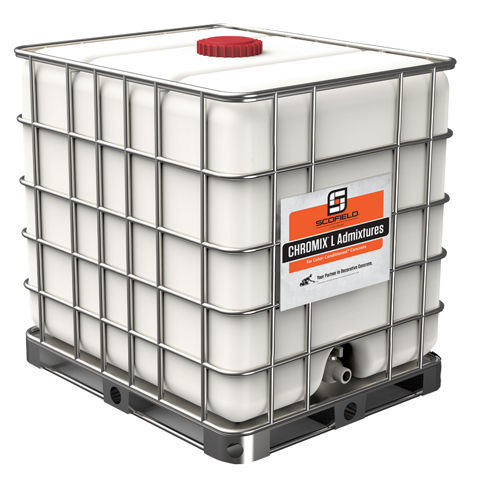Factors Influencing Final Color & Appearance
Colors represented on the CHROMIX® Admixtures Color Chart A-350GL depict samples of broom finished concrete made with medium gray cement and cured with LITHOCHROME® Colorwax™.The final color and appearance obtained on the jobsite will be influenced by concrete composition, surface finishing technique, and curing compound/sealer selection.
Concrete composition variations that can impact color include cement type and color, aggregate selection, and the use of pozzolans such as slag or fly ash. Differences in sealer or curing compound type, such as water or solvent based, or if no sealer is used, can also influence final appearance.
Finishing techniques will influence final concrete appearance. Different tools such as wood floats, magnesium floats, steel trowels, brooms, and edging tools, will each influence color, surface texture, sealer penetration, and final cured concrete appearance differently. Do not change tool types once work has begun.
Changes in water content and water-to-cement ratio, both in the mix and on the concrete surface during finishing, can influence the final surface color. Mix designs that develop excessive bleed water can float non-uniform cement/pigment ratios, and cause uneven or weak coloring. Once mix designs are established, do not add water to alter concrete plastic properties.
Do not add water to loosen partially cured loads. Do not use “watering” sprinklers as colored concrete cures, or use wet brooms and tools while finishing. Any of these will likely result in inconsistent concrete color.
Placement and Finishing Tips
As freshly placed concrete cures, its color will vary with differences in surface moisture. Concrete curing in shaded areas or in the center of large slabs will surface dry slower than those exposed to sunlight or closer to form edges. This can cause color variations that will often fade with time. Avoid high salt aggregates that can cause efflorescence that can make color irregular. These visual differences can be long lasting, and raise questions about the quality of the concrete placement. Use LITHOCHROME® Colorwax™ tinted to match the final color of the cured concrete and avoid these problems and deliver jobs that are uniform in color and appearance.
Placements to be Ground and Polished
Use of 1 bottle of SCOFIELD® Ready-Mix Truck Defoamer per concrete truckload to minimize bug holes and air voids.
Reinforcing Fiber Interactions.
If high air content is experienced with reinforcing fibers, pre-wet the fibers by tumbling in the mixer three minutes with water, colorant, and 1 bottle of SCOFIELD® Ready-Mix Truck Defoamer per truckload before batching concrete into the mixer.
Jobsite Test Sections
Prior to large scale production, the concrete or cementitious mix design for each color to be produced must be made. Conduct small scale testing to demonstrate concrete from the mix design meets all slump, flow, air content, compressive strength, and any other required concrete specifications.
Prior to general jobsite use, representative Jobsite Test Section(s) or “Mock-Ups” must be produced and approved for each individual concrete color mix design, surface finish/texture, and for each curing compound/sealer combination that will be created.
Use Jobsite Test Sections to verify entire system suitability including frame/mold and foundation preparation methods, surface concrete specification compliance, finishing techniques, safety procedures, and achieved performance of the fresh and fully cured concrete. When applicable, test completed systems for wet and dry slip resistance. Evaluate polishing or coating application techniques, final color, and visual appearance. Do not proceed with products, techniques, or finishing systems that do not meet required specifications or meet with site owner approval.
Selected Jobsite Test Sections should be in close proximity to the larger job area, and made from the same concrete mix design that will be used on the larger project. Test sections should be sized to be representative of the finished project, and be produced by the same workers who will perform the project installation.

